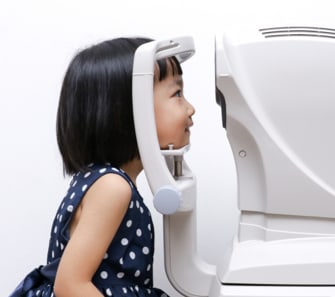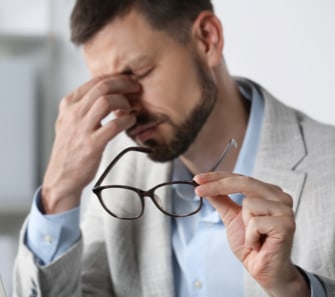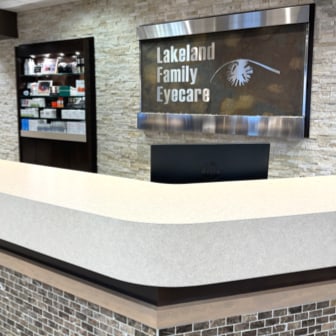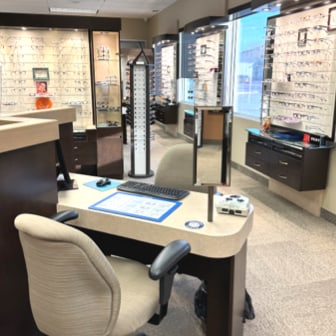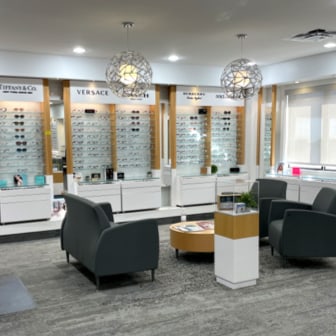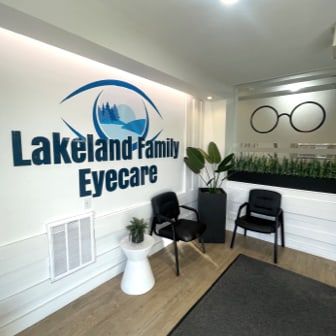
Protect Your Eyesight & Ocular Health
Many eye diseases can lead to vision impairment, vision loss, or blindness. Even if you have 20/20 vision and no obvious symptoms, you may have a severe eye condition that requires treatment.
Many causes of vision loss are preventable with timely access to quality eye care. Even the leading causes of severe vision impairment, cataracts, diabetic retinopathy, glaucoma, and macular degeneration, can be managed to support your quality of life.
At Lakeland Family Eyecare, we aim to provide accurate diagnoses and treatments for various vision-threatening diseases.

Comprehensive Eye Exams Are Key to Managing Eye Health
We provide thorough eye disease testing with innovative diagnostics and tried-and-true techniques for patients of all ages.
By regularly conducting eye exams, we can closely monitor your eye health, so we can detection and monitor any changes or early signs of disease.
Glaucoma: The Silent Thief of Sight
Glaucoma is a group of chronic eye diseases that cause progressive damage to the optic nerve. It typically develops with no symptoms in the early stages, and can severely impair vision, leading to complete blindness if untreated.
Although the exact cause of glaucoma is unknown, glaucoma is generally associated with increased internal eye pressure.
We use several technologies to test for glaucoma, including digital retinal photography and the Topcon Maestro OCT. These technologies, which help us detect the earliest signs of glaucoma, are included in our comprehensive eye exam.
Types of Glaucoma
There are many types of glaucoma, but the main 3 are:
- Open-Angle: This is the most common form of glaucoma. Open-angle glaucoma occurs when the eyes’ drainage canals gradually become inefficient over time, resulting in increased eye pressure.
- Angle-Closure: Also referred to as closed-angle or narrow-angle glaucoma, angle-closure glaucoma is a medical emergency. It’s caused by a sudden rise in eye pressure due to the angle between the iris and cornea closing.
- Normal-Tension (NTG): With this type of glaucoma, the optic nerve becomes damaged even though internal eye pressure remains in the normal range.
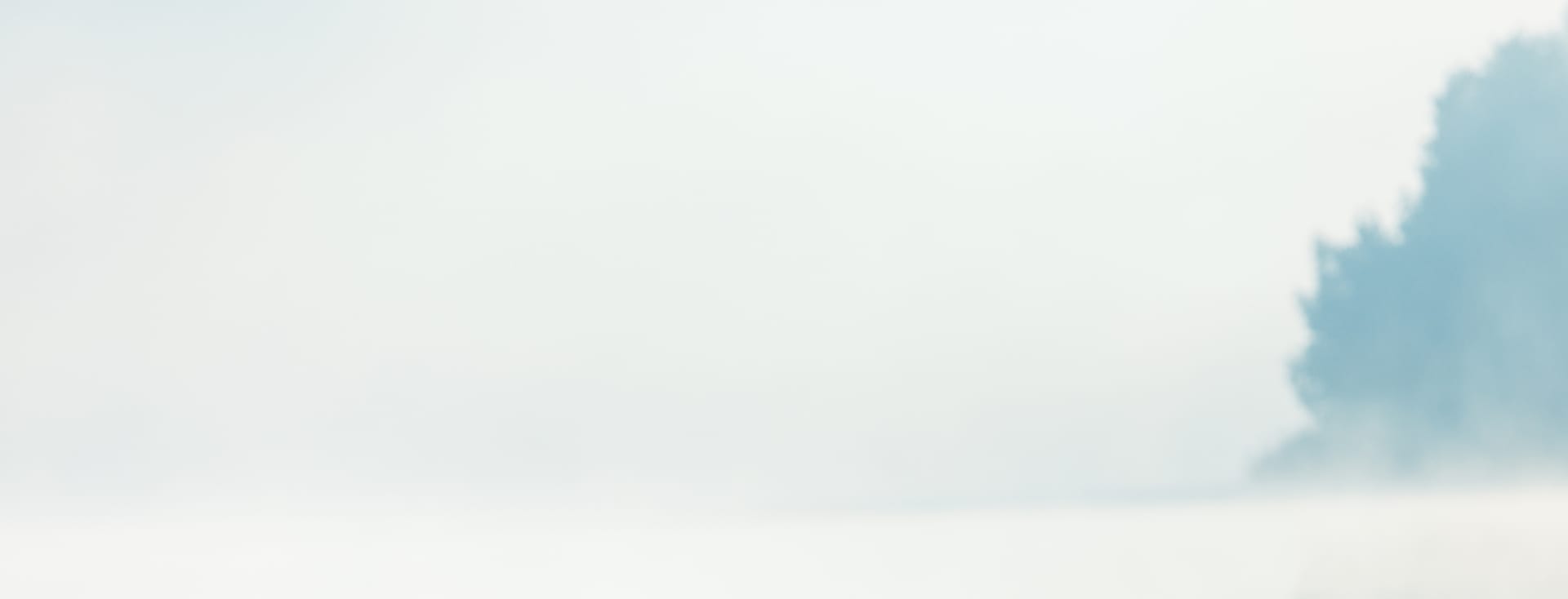
Age-Related Macular Degeneration (AMD)
Macular degeneration, also referred to as age-related macular degeneration (AMD), is the progressive deterioration of the macula, the part of the retina responsible for detailed central vision. As the name indicates, AMD is commonly related to the aging process and is the leading cause of blindness in North Americans over 55.
Types of AMD
Patients can have one or both of the following types of AMD.
Dry macular degeneration (non-neovascular) is identified by yellow deposits known as that form on the macula. These drusen deposits grow in mass and quantity over time, dimming and distorting the patient’s vision. Dry AMD has the potential to advance to wet AMD.
Wet macular degeneration (neovascular) is the more advanced type of AMD and presents in the later stages of the disease. Wet AMD is caused by the formation of abnormal blood vessels beneath the retina. These are weak and end up leaking blood and other fluids into the eye, distorting and blurring central vision.
Cataracts
A cataract is a clouding of the eye’s natural lens. Light rays that travel into the eye are focused through the lens onto the retina. As the lens clouds, light is diffused and cannot properly focus on the retina, impacting vision and eyesight.
According to the CNIB, over 3.5 million Canadians have cataracts. Cataracts are common in Canadians over 60, and in most cases are easily treated. There is no need to suffer from vision loss due to cataracts. Cataract treatments are well studied and proven to be highly successful.
Flashes
Spots of light in your field of vision are known as flashes. They’re not caused by anything outside the body, but by physical pressure placed on the retina, the light-sensitive tissue on the back of the eye.
Many people will experience flashes sporadically throughout their lives. Most flashes are nothing to worry about and are a natural part of aging.
However, flashes can indicate an issue that needs immediate attention if they’ve increased in frequency and quantity.
Sudden onset of eye flashes or floaters may indicate:
- Retinal bleed from diabetes or eye disease
- Retinal tear or detachment
An optometrist should always investigate any abnormal changes to your eyesight.
Floaters
Have you ever noticed dark specks shaped like dots, dark spots, squiggles, or cobwebs that seem to move away when you try to look at them?
These are known as floaters. They are most visible when you look at bright backgrounds, such as a clear blue sky or snow on a sunny day.
Floaters move as your eye moves, creating the illusion of floating shapes in your vision. But they’re actually shadows from cells in the vitreous, the gel-like fluid inside your eye.
Floaters are usually harmless, but a sudden appearance or increase in number can indicate an serious eye condition.

Conjunctivitis (Pink Eye or Red Eye)
Conjunctivitis can be highly contagious. Most patients are not aware of the type of pink eye they have and risk infecting others. There are 3 primary types of conjunctivitis, all of which we are equipped to treat onsite.
You may experience one or more of the following symptoms:
- Discharge that crusts over the eyelashes (particularly after a night’s sleep)
- Burning, gritty sensation
- Itchy or irritated eyes
- Blurred vision
- Redness of the white of the eye & inner eyelid
- Excess amount of tears

Book Your Eye Care Appointment Today
Treatment is most effective when eye disease is detected and diagnosed early. This proactive step starts with a comprehensive eye exam. Please call us today and book your appointment!

Our Brands







Find Us In Bonnyville & St. Paul
Bonnyville
Find us on the corner of Main & 52nd Street, across from Westline Autowash.
- 5201 50 Avenue
- Bonnyville, AB T9N 2G6
- Phone: 780-826-4437
- Fax: 780-826-4267
- Monday: 8:00 AM – 6:00 PM
- Tuesday: 8:00 AM – 8:00 PM
- Wednesday: 8:00 AM – 8:00 PM
- Thursday: 8:00 AM – 5:00 PM
- Friday: 8:00 AM – 2:00 PM
- Saturday: Closed
- Sunday: Closed
St. Paul
You can find us on 51st Avenue, next to the Fire Hall.
- 4916 51 Avenue
- St. Paul, AB T0A 3A0
- Phone: 780-645-3790
- Fax: 780-645-2830
- Monday: 8:00 AM – 5:00 PM
- Tuesday: 8:00 AM – 5:00 PM
- Wednesday: 8:00 AM – 8:00 PM
- Thursday: 8:00 AM – 5:00 PM
- Friday: 8:00 AM – 2:00 PM
- Saturday: Closed
- Sunday: Closed

Our Blog
How Do Contact Lenses Work?
Contact LensesWhether you’re a long-time contact lens wearer or considering a switch from glasses, understanding how these tiny discs work can help you make informed decisions about your vision care needs. Contact lenses sit directly on the eye’s surface and compensate for any errors by helping light refract correctly on the retina (the light-sensitive tissue at […]
How Long Does an Eye Exam Take?
Eye ExamsBooking an eye exam might seem like a hassle, but it’s an important step in maintaining your vision. It doesn’t take as long as you might think, and the benefits outweigh the minor inconvenience. A regular eye exam can help detect and address potential eye problems early, preventing more serious issues down the line. If […]
Why Are My Eyes So Dry When I Wake Up?
Contact Lenses, Dry Eye, Eye ExamsDry eyes are one of the most common eye disorders. Millions of people experience dry eye at some point in their lives, especially as they get older. Many people’s eyes dry out overnight, leading to that itchy, sandpapery feeling when they wake up in the morning. The most common reasons for waking up with dry […]
How Do Contact Lenses Work?

Whether you’re a long-time contact lens wearer or considering a switch from glasses, understanding how these tiny discs work can help you make informed decisions about your vision care needs. Contact lenses sit directly on the eye’s surface and compensate for any errors by helping light refract correctly on the retina (the light-sensitive tissue at […]
How Long Does an Eye Exam Take?
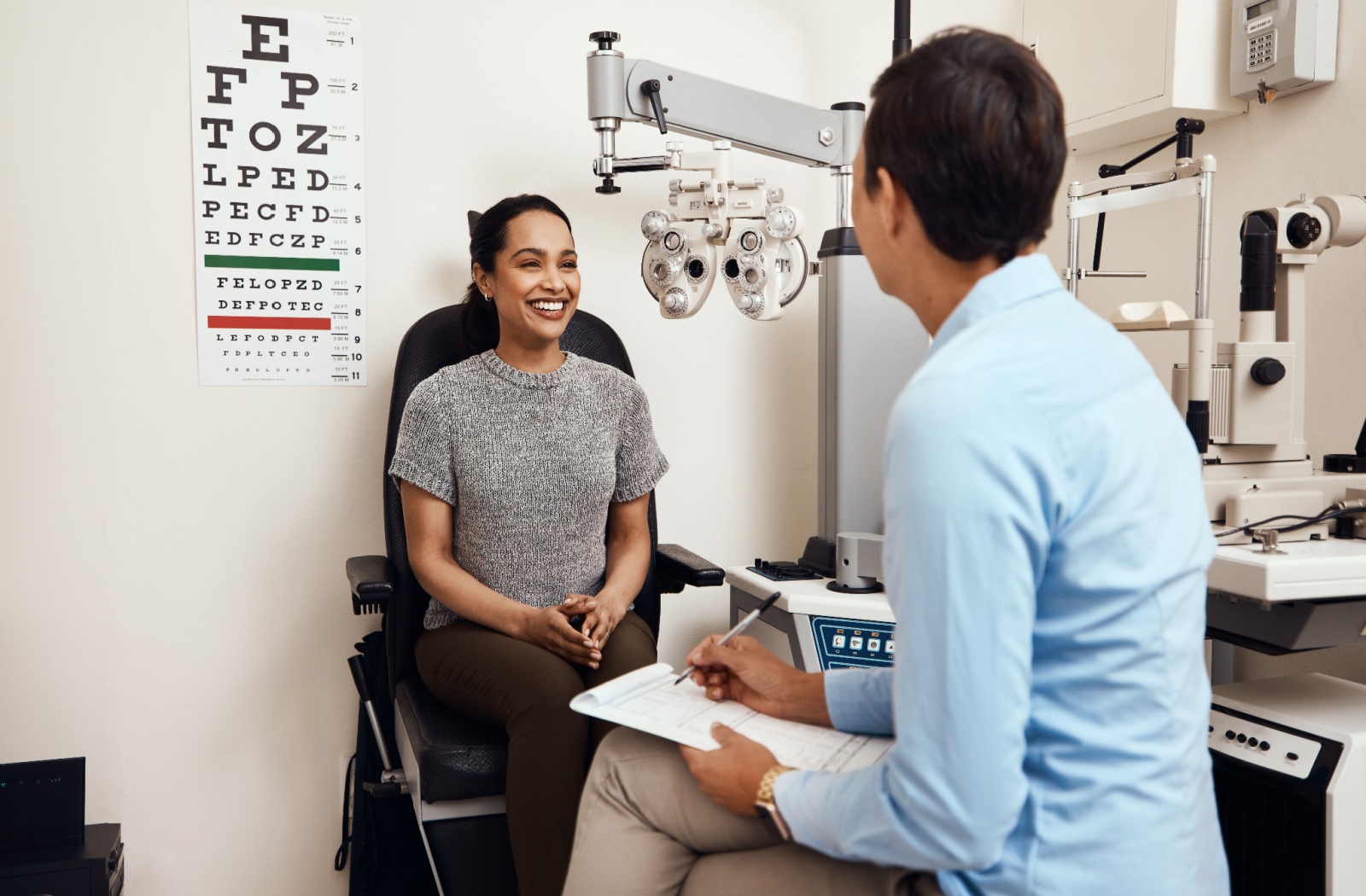
Booking an eye exam might seem like a hassle, but it’s an important step in maintaining your vision. It doesn’t take as long as you might think, and the benefits outweigh the minor inconvenience. A regular eye exam can help detect and address potential eye problems early, preventing more serious issues down the line. If […]
Why Are My Eyes So Dry When I Wake Up?

Dry eyes are one of the most common eye disorders. Millions of people experience dry eye at some point in their lives, especially as they get older. Many people’s eyes dry out overnight, leading to that itchy, sandpapery feeling when they wake up in the morning. The most common reasons for waking up with dry […]



